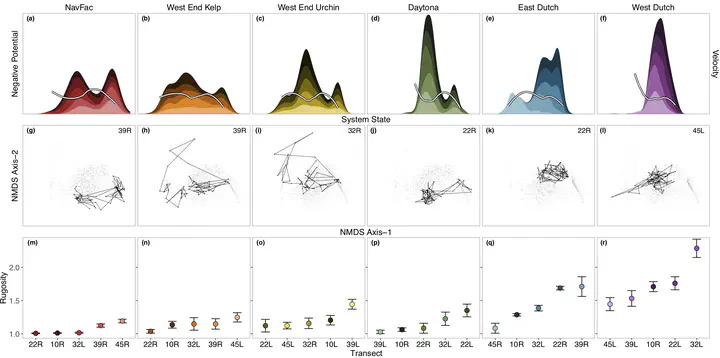
Abstract
The factors that determine why ecosystems exhibit abrupt shifts in state are of paramount importance for management, conservation, and restoration efforts. Kelp forests are emblematic of such abruptly shifting ecosystems, transitioning from kelp-dominated to urchin-dominated states around the world with increasing frequency, yet the underlying processes and mechanisms that control their dynamics remain unclear. Here, we analyze four decades of data from biannual monitoring around San Nicolas Island, CA, USA, to show that substrate complexity controls both the number of possible (alternative) states and the velocity with which shifts between states occur. The superposition of community dynamics with reconstructions of system stability landscapes reveals that shifts between alternative states at low-complexity sites reflect abrupt, high-velocity events initiated by pulse perturbations that rapidly propel species across dynamically unstable state-space. In contrast, high-complexity sites exhibit a single state of resilient kelp-urchin coexistence. Our analyses suggest that substrate complexity influences both top-down and bottom-up regulatory processes in kelp forests, highlight its influence on kelp-forest stability at both large (island-wide) and small (<10 meter) spatial scales, and could be valuable for holistic kelp-forest management.